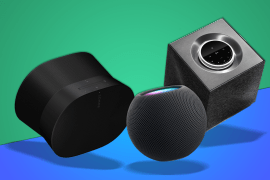Bowers & Wilkins Pi6 review: it’s all about the audio
Fewer features, familiar sound quality

Stuff Verdict
The Pi6 majors on sound quality, as you’d expect from Bowers and Wilkins, and is very comfortable. It’s lacking some features similarly-priced rivals take for granted, though.
Pros
- Fantastic sound quality only a small step behind the Pi8 flagship
- Secure, comfortable fit
- Fairly effective ANC and decent battery life
Cons
- Similarly-priced rivals have it beaten for features
- Limiting EQ settings seems arbitrary
Introduction
Bowers & Wilkins set a very high bar for wireless earbuds in 2024. I was so impressed by the Pi8 that I named them best in-ears of the year in the Stuff Awards. Now it’s the turn of the Pi6, a baby brother that loses a few features – but tries to stay close to the Pi8’s sublime sound.
They’re a big design departure from the outgoing Pi5 S2, having taken the same approach to fit and comfort as the Bowers & Wilkins Pi8 to sit securely in more ear shapes and sizes. Different driver material, a stripped-back charging case and simpler streaming codecs mark it out as the more mainstream offering – but it’s also more affordable, at $249/£219 to the Pi8’s $339/£349.
Competition is fierce at that price point, though. Will sound quality alone be enough for the Pi6 to compete with ANC all-rounders from the likes of Sony, Bose, Sennheiser and the rest?
How we test headphones
Every pair of earphones and headphones reviewed on Stuff is used for a minimum of a week’s worth of daily listening. We use a playlist of test tracks made up of multiple genres to assess sound, and use our years of experience to compare to other models. Manufacturers have no visibility on reviews before they appear online, and we never accept payment to feature products.
Find out more about how we test and rate products.
Design & build: get comfortable
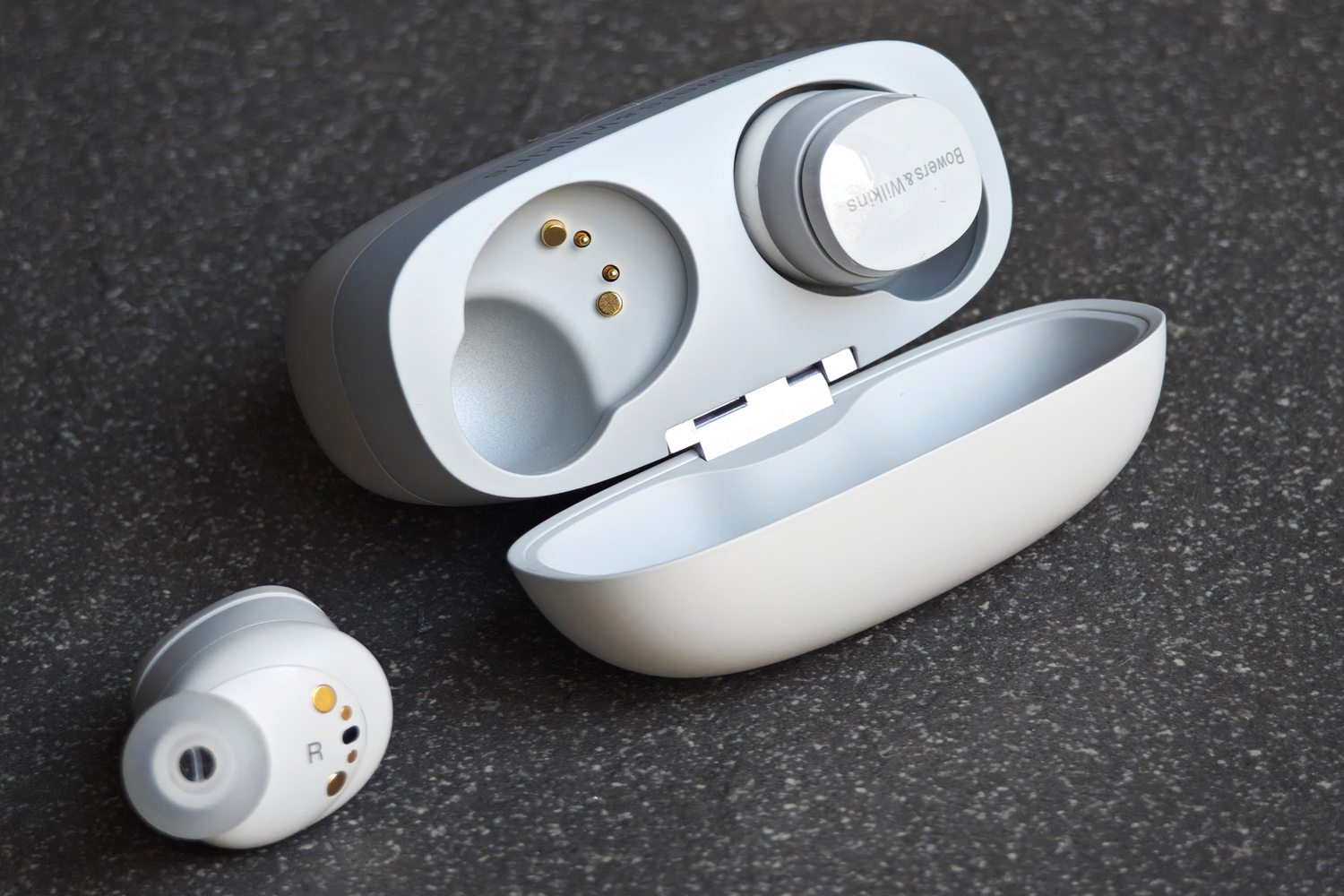
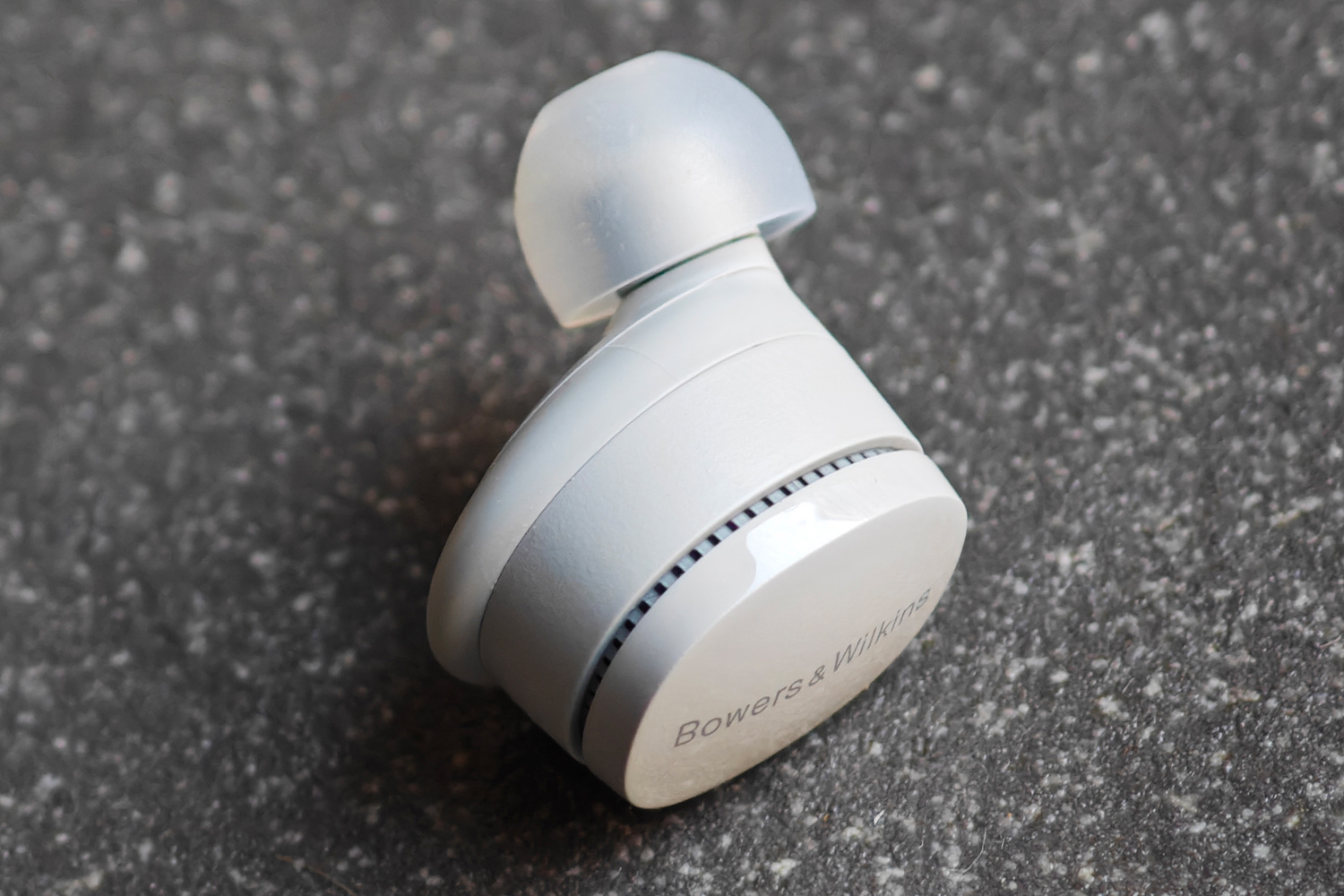
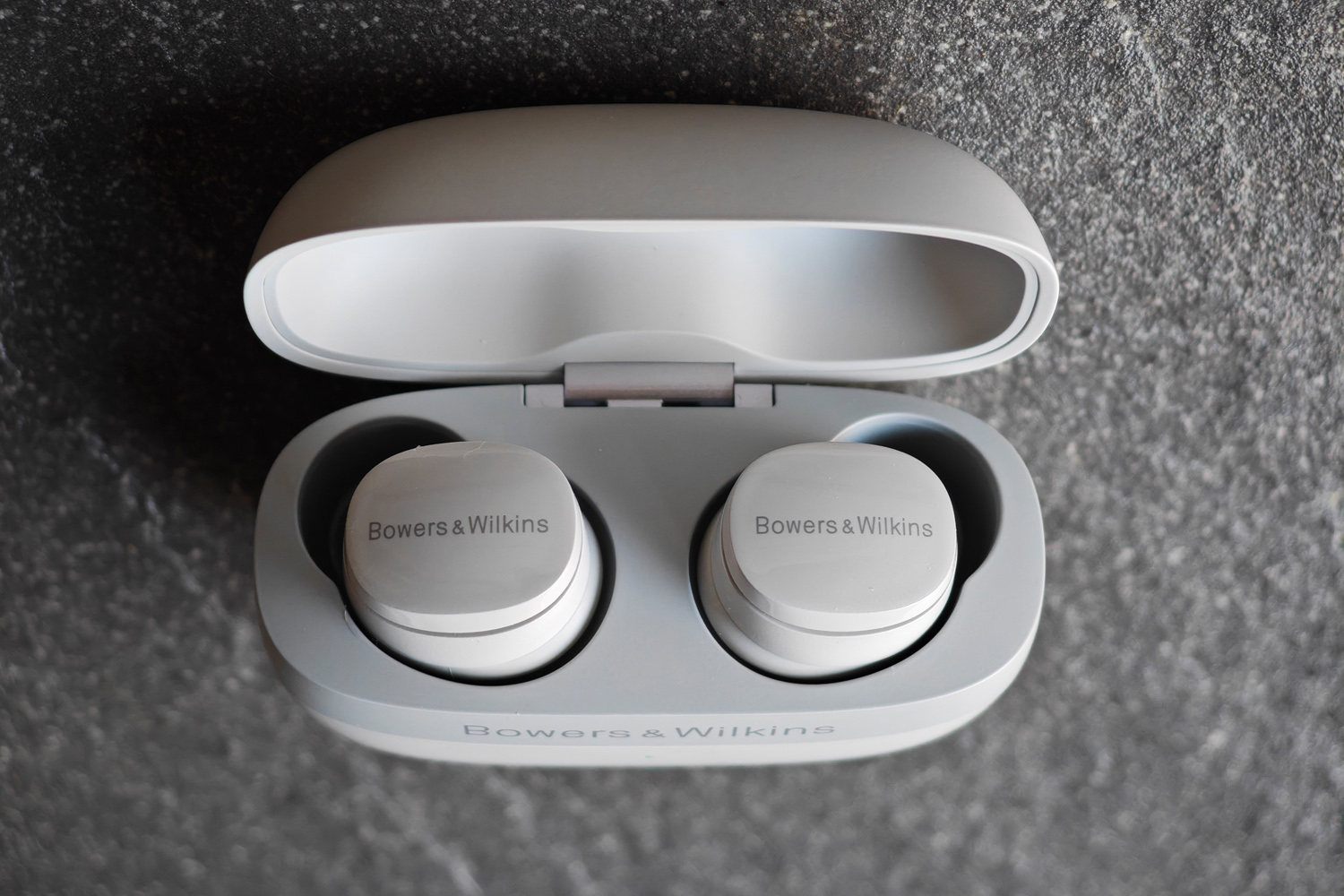
The Pi6’s rounded, one-piece buds are far simpler and more sculpted than the chunkier Pi5 S2. The parts that make contact with your ear have been changed from hard plastic to a softer, more elasticated material, and a small wing tip helps keep them more firmly in place. It helps that the centre of gravity has moved more inward. Vented grilles circle the whole outer rim of each bud, which are meant to improve wireless reception and microphone call quality.
There’s a clear family resemblance to the Pi8. Both mix matte and glossy plastics, which feels less egregious here than on the more expensive model, but the two-tone trim has been ditched here in favour of one single colour. The four on offer – Cloud Grey, Storm Grey, Forest Green and Glacier Blue – are subtle, earthy tones that don’t make nearly as big a style statement as the Pi8’s various hues.
IP54 splash resistance is a nice inclusion, given B&W wouldn’t be my first thought when choosing a pair of workout earphones. It means they’ll cope just fine should the heavens open while you’re out and about.
Importantly, the shape changes really do make these earphones more comfortable to wear than their predecessors. They stayed firmly in place once I’d found a good position, didn’t need regular readjustment while walking, and didn’t give me ear ache after a long listening session. It’s also great to see four pairs of silicone ear tips, including an extra small size, in the box; they should fit a wider range of users as a result.
The matching charging case looks almost identical to the Pi8’s, with different materials and finishes separating the two. It’s much smaller than the outgoing Pi5 S2, and while hardly the smallest case I’ve seen lately, still slipped easily enough into my trouser pockets. I like how the metal hinge has brought a more satisfying snap when you close the flip-top lid, too.
Features & battery: not so special case
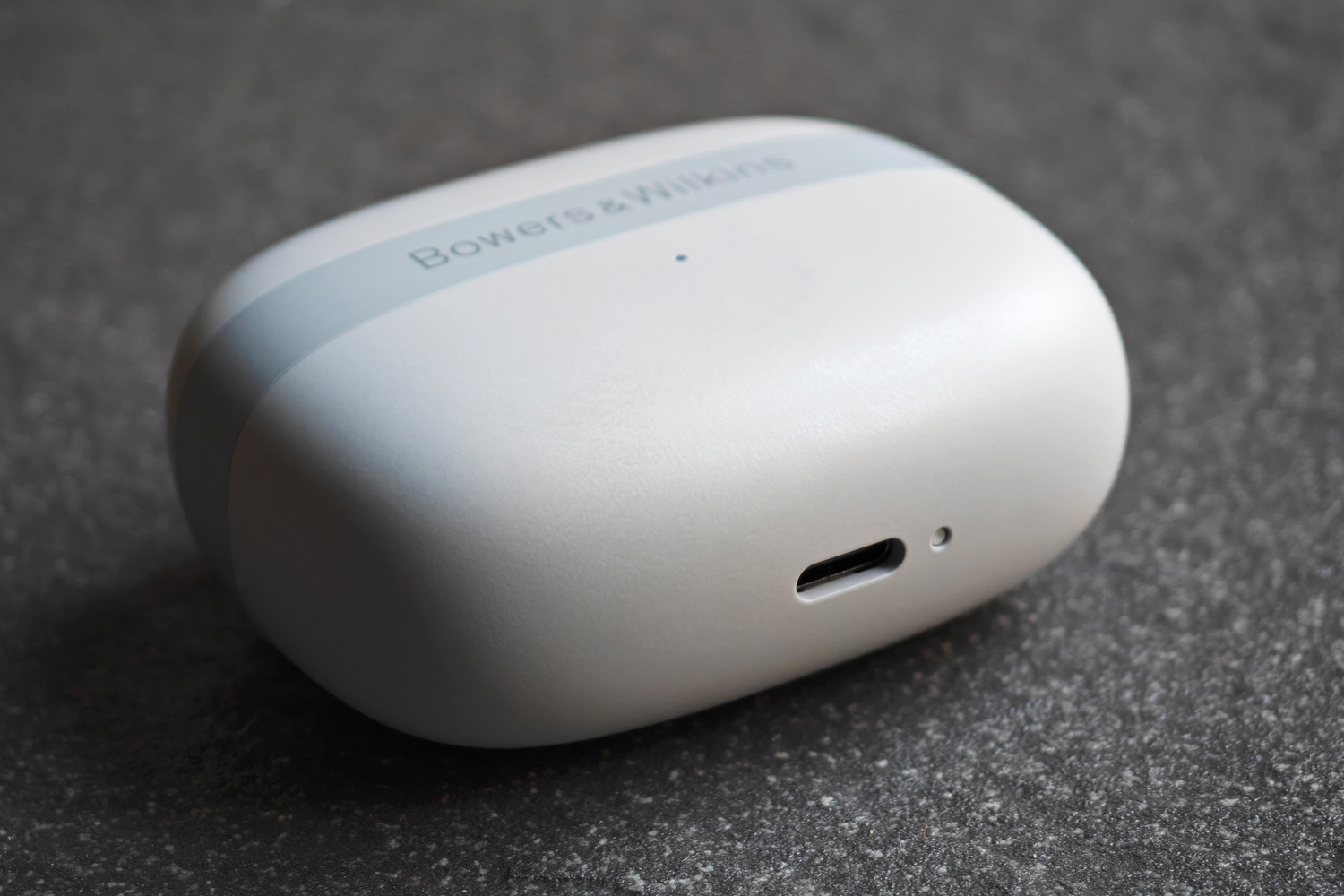
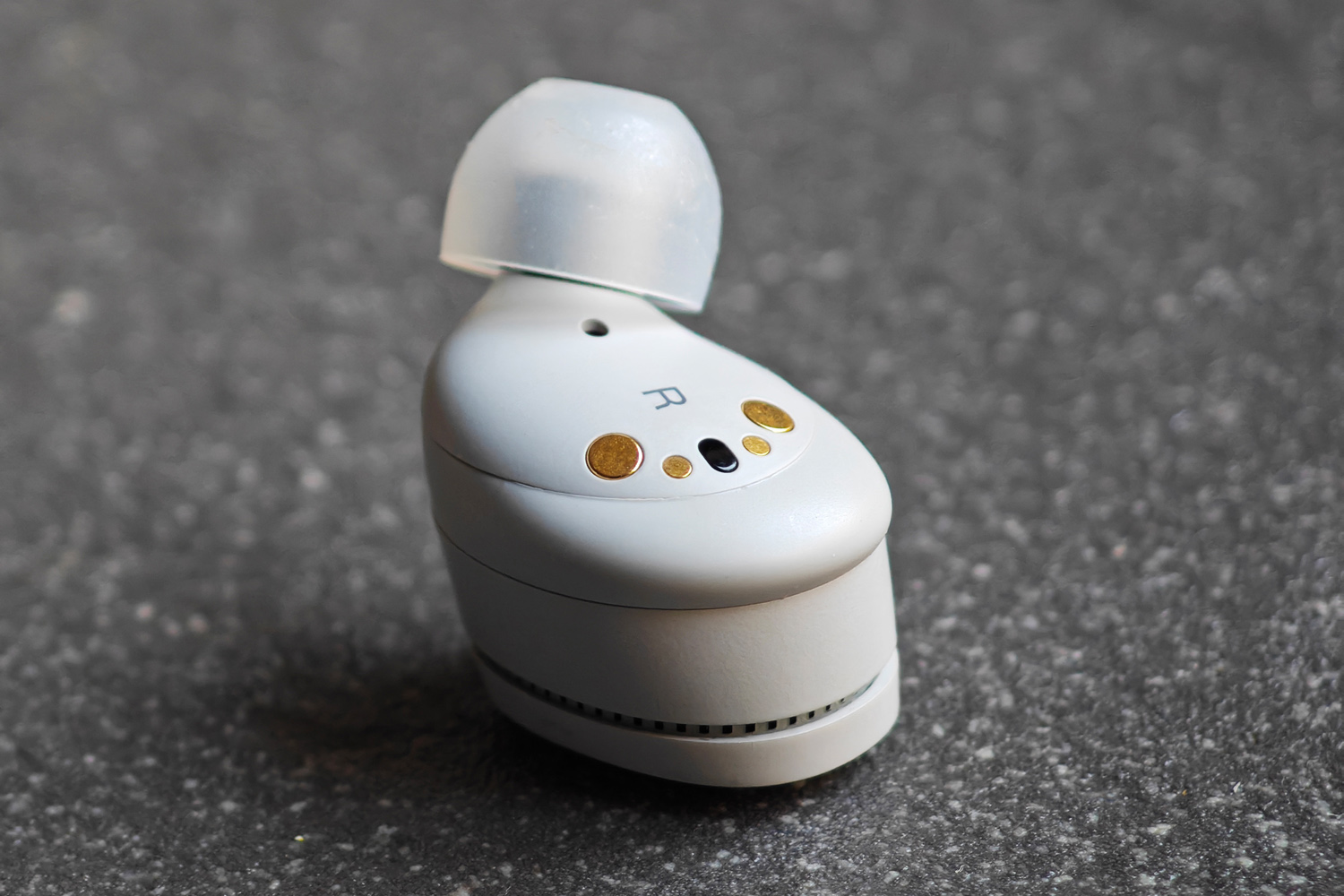
The Pi6 wouldn’t be much of a Bowers & Wilkins product if it shunned high resolution playback, so it rightly supports aptX Adaptive Bluetooth. That’s a step behind the aptX Lossless seen on the Pi8, but still fine for 24-bit/96Hz with a bit of compression. It’s hardly a dealbreaker given the price. I also didn’t notice any Bluetooth drop-outs, which could be an issue on Bowers’ older in-ears, even in built-up areas with lots of signal interference.
Bigger omissions can be found elsewhere, though. The charging case misses out on the Pi8’s clever audio retransmission abilities, so you won’t be using it with any devices that don’t have Bluetooth on board. It doesn’t support wireless charging, either, so the only top-ups will be via USB-C.
That said, the Pi6 didn’t disappoint in terms of battery life. The buds themselves usually lasted between seven and eight hours of listening with noise cancelling enabled, which is an hour or so more than the Pi8 can manage and on par with class leaders like the Sony WF-1000XM5. I got two extra hours of listening from a 15 minute stay in the charging case, which has enough oomph for two full recharges before it’ll also need refuelling.
In other respects these are a pretty straightforward pair of earphones. You won’t find any sort of spatial surround upmixing here – Bowers is still all about stereo sound – and the inbuilt microphones deliver clear enough call quality.
Interface: simpler streaming
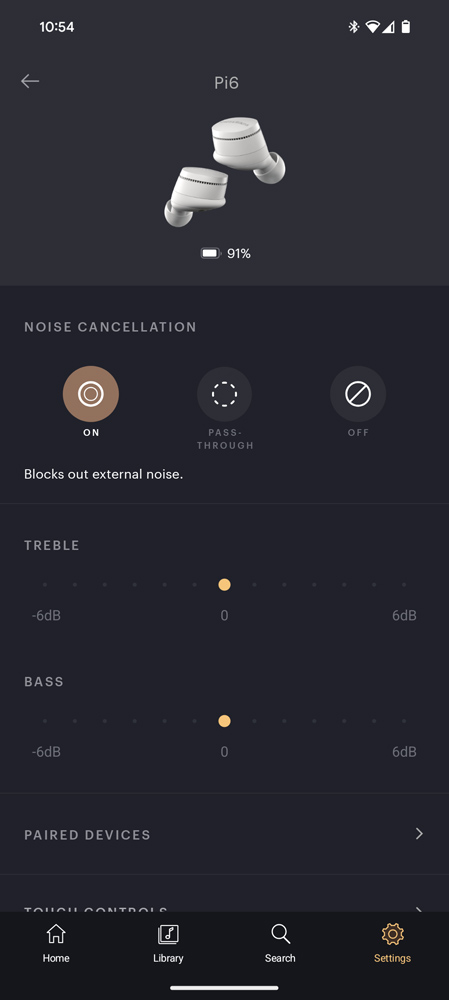

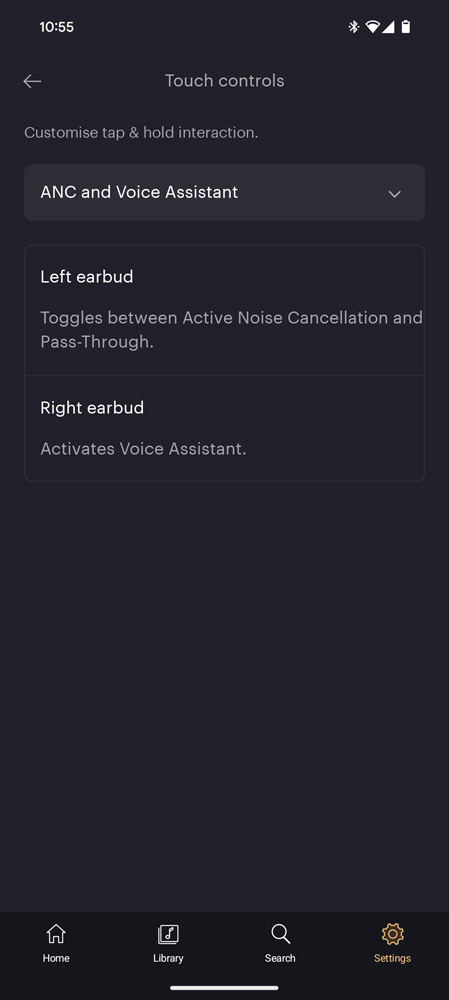
I’m a big fan of Bowers’ smartphone companion app, which is more a streaming one-stop shop than a way to control your earphones. You can log into high resolution music services like Tidal, Deezer and Qobuz (and regular ones like TuneIn and Soundcloud), and shift playback between the Pi6 and any other connected B&W kit on your Wi-Fi network, without having to hop between multiple apps.
Elsewhere Bowers has stuck with the Pi8’s pared-back approach to customisation. You can toggle the Pi6’s noise cancelling between on, off, and transparency modes, but not tweak the amount of passthrough or ANC strength. The app also lets you pair to a second device using Multipoint and turn off the wear sensor, although it worked well in my testing so I never felt the need. The buds stayed secure even while running, and never paused my tunes accidentally.
You can also pick what a tap-and-hold does on each earbud: ANC and voice assistant, or volume control. There’s no way to mix and match, though. The other functions – playing and pausing with a single tap, and skipping forwards and backwards with double- and triple-taps – are hard wired. Happily the capacitive surfaces weren’t so sensitive that I’d change tracks accidentally while adjusting the fit.
I was a little disappointed the Pi8’s five-band equaliser hasn’t made the grade, with Bowers’ more traditional bass and treble sliders being your only EQ adjustment. There are no presets, and no way to save specific tunes for particular genres. It feels like an arbitrary way to separate it from the pricier Pi8, but also speaks volumes for the firm’s confidence in its audio tune.
Sound quality and noise cancelling: a familiar tune
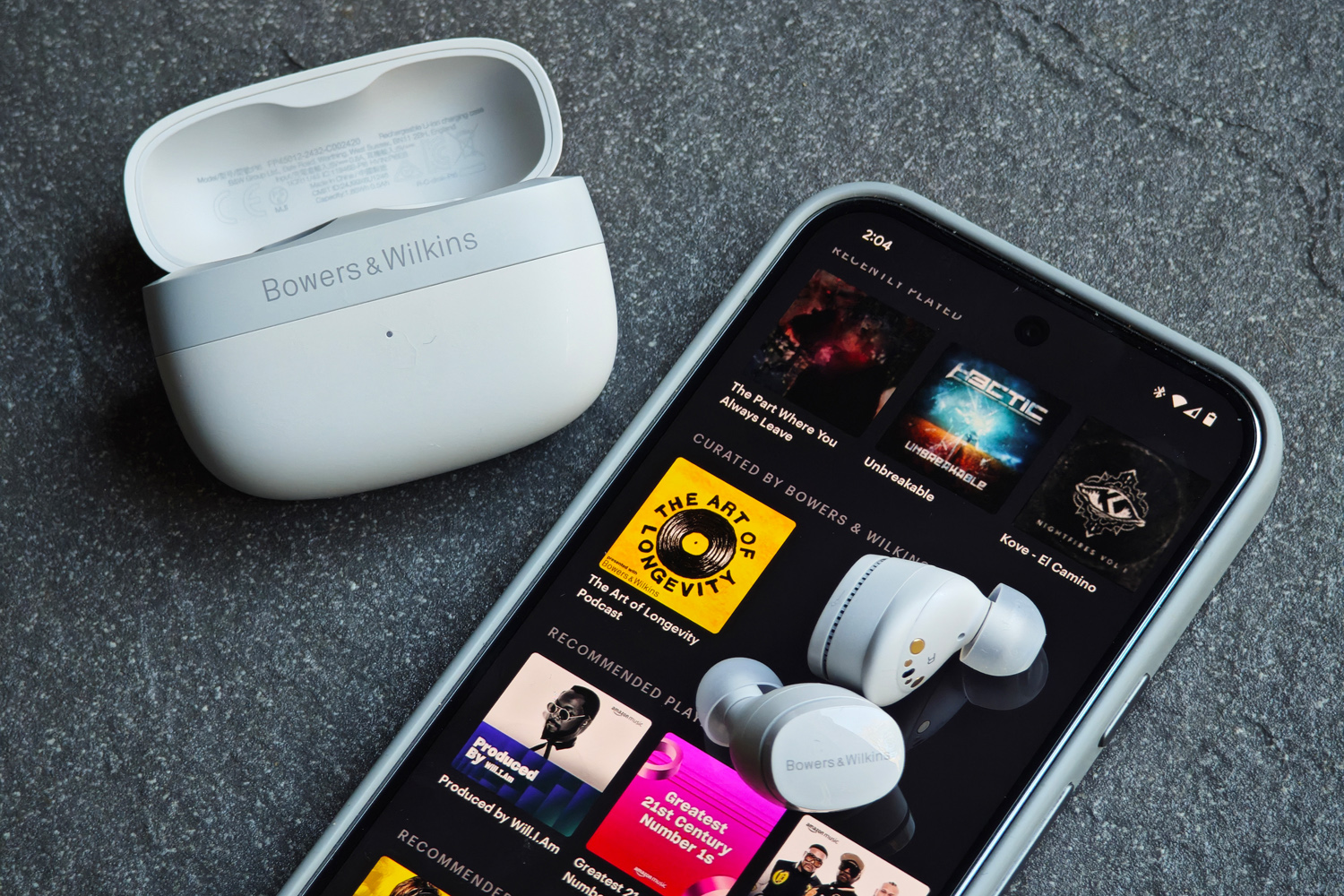
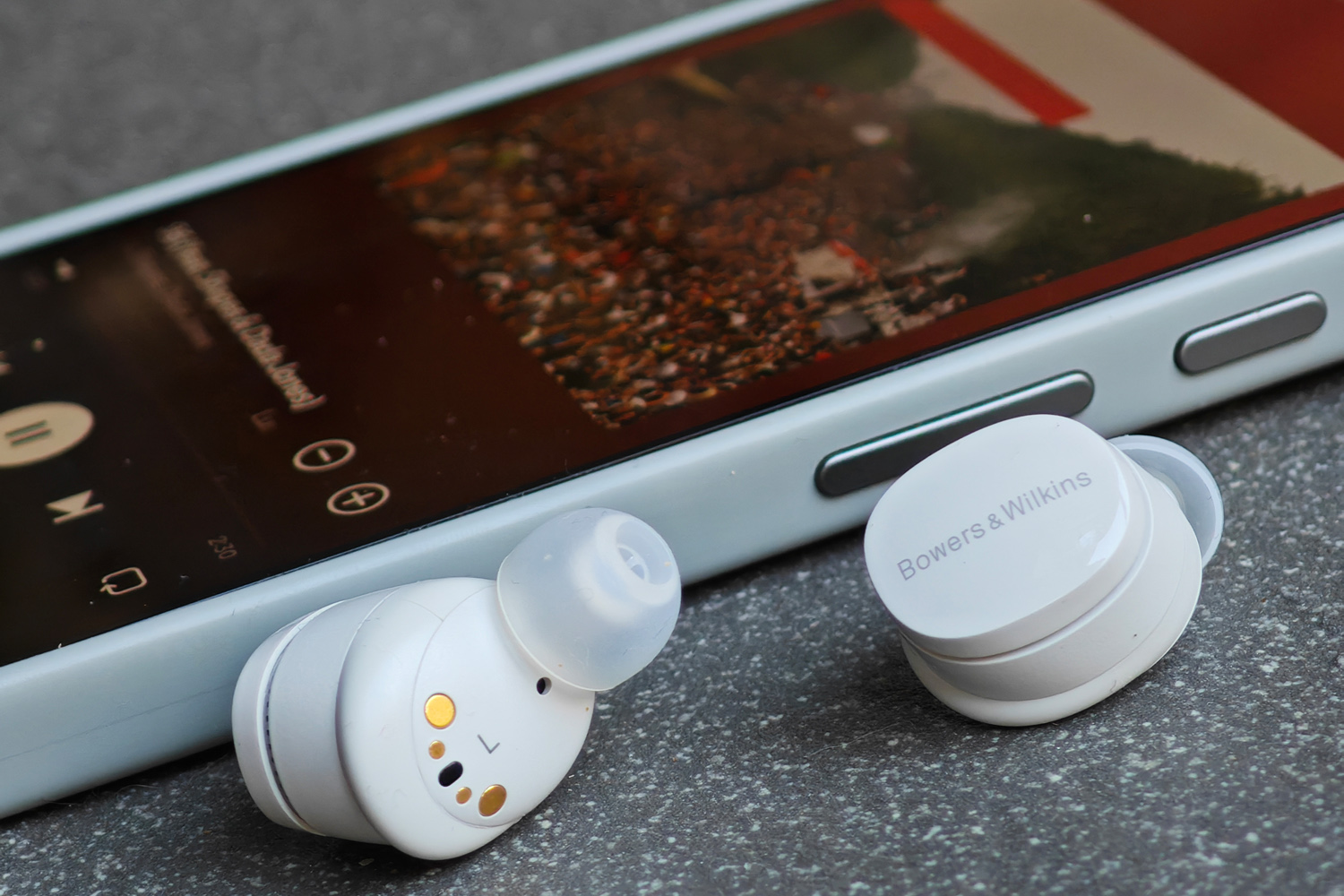
It has the same number of microphones per bud as the Pi8, but Bowers has used Qualcomm’s active noise cancelling algorithms here rather than its own. The difference isn’t night and day, but it’s definitely there; wind noise is a fraction more noticeable, background chatter that little bit more able to cut through whatever you’re listening to. Passthrough mode is only average, too.
I still thought it did a good job muting droning public transport and low-frequency sounds like computer fans and air conditioning units. Passive noise isolation is as good as the Pi8, given they have the same shape. That puts them somewhere near the middle of the pack, given the price; Bose and Sony do better for similar money.
Arguably the sonic performance makes up for it, courtesy of a single 12mm dynamic driver in each ear. They use bio-cellulose speaker cones, instead of carbon ones like the Pi8, which means they’re not quite as stiff and aren’t able to strip out upper end distortion quite as well, but Bowers’ sound engineers have still coaxed out a precise and analytical tune with plenty of detail.
I can’t think of many similarly-priced wireless earbuds that sound this crisp, yet still have a full-bodied low end. The sub-bass on Ganja White Night’s Burnin is deliciously squelchy, without losing definition or intruding on the rest of the mix. Linkin Park’s Stained hits equally hard, but the vocals still demand your attention. There’s a little less separation between instruments than the Pi8, but nothing to nudge it behind any of its peers. Bowers’ familiar warmness is here, suiting a wide range of genres.
Dialling down the bass just a notch using the app’s EQ sliders gave electronic tracks the smallest amount more mid-range clarity, but I felt no reason to boost things the other direction; for more treble definition you’ll really need to step up to the Pi8.
Bowers & Wilkins Pi6 verdict
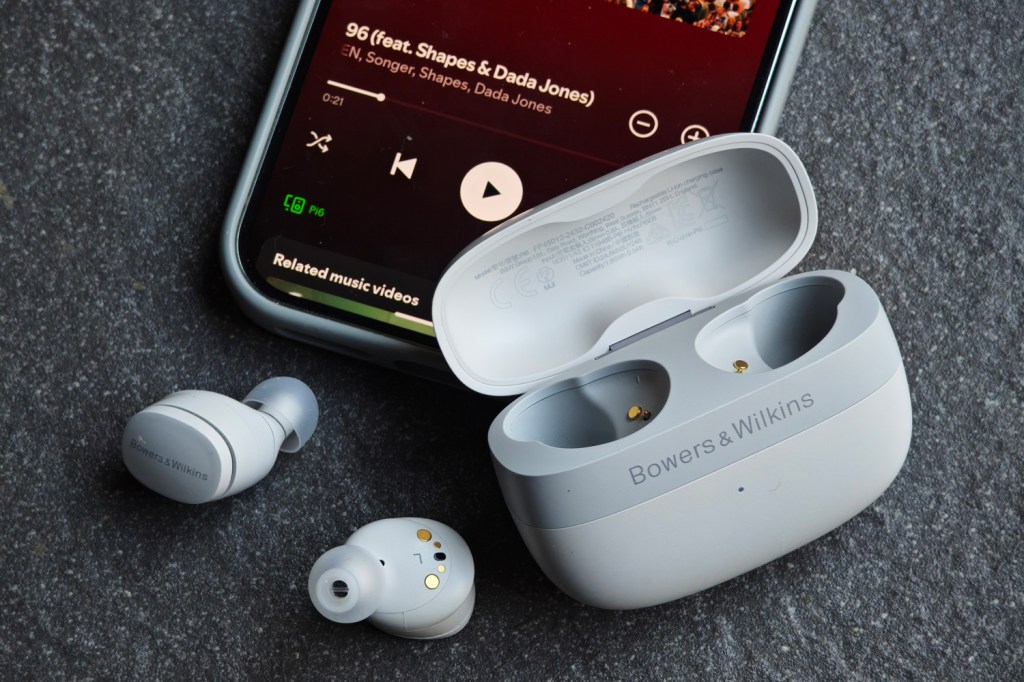
It might not be quite the slam dunk that that Pi8 was, on account of a more stripped-back feature set and slightly less effective noise cancelling – but there’s no denying the Pi6 sounds very good indeed. Bowers & Wilkins has also stepped up its comfort game from the model it replaces, and battery life is now very competitive too.
Keeping the clever audio rebroadcasting tech exclusive to the flagship model means there’s less to separate this from the myriad other options in the $200-$300 price bracket. Most rivals tend to have wireless charging and more customisable EQ options, while some add spatial audio to the mix. If you equate value to an extensive spec sheet (or need the best ANC for your cash) then the Sony XM5 continues to have real appeal – but those who prioritise musical clarity will be well-served here.
Stuff Says…
The Pi6 majors on sound quality, as you’d expect from Bowers and Wilkins, and is very comfortable. It’s lacking some features similarly-priced rivals take for granted, though.
Pros
Fantastic sound quality only a small step behind the Pi8 flagship
Secure, comfortable fit
Fairly effective ANC and decent battery life
Cons
Similarly-priced rivals have it beaten for features
Limiting EQ settings seems arbitrary
Bowers & Wilkins Pi6 technical specifications
| Drivers | 12mm dynamic |
| ANC | Yes |
| Bluetooth version | Bluetooth 5.4 |
| Codecs supported | SBC, AAC, aptX Adaptive |
| Durability | IP54 |
| Battery life | 8hrs (ANC on, buds) 16hrs (case) |
| Dimensions | 7g (buds, each) 65xx29x52mm, 46g (case) |




